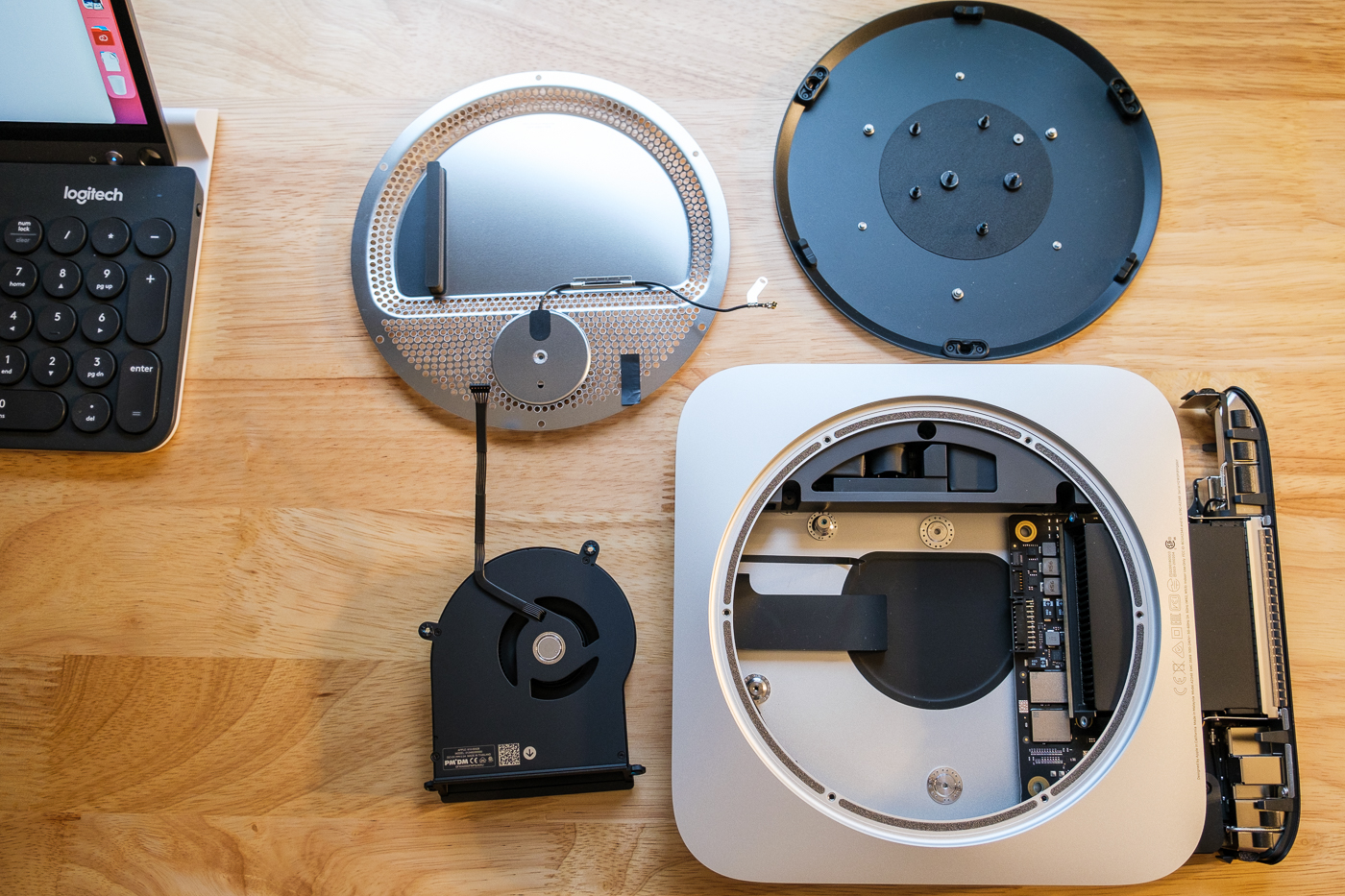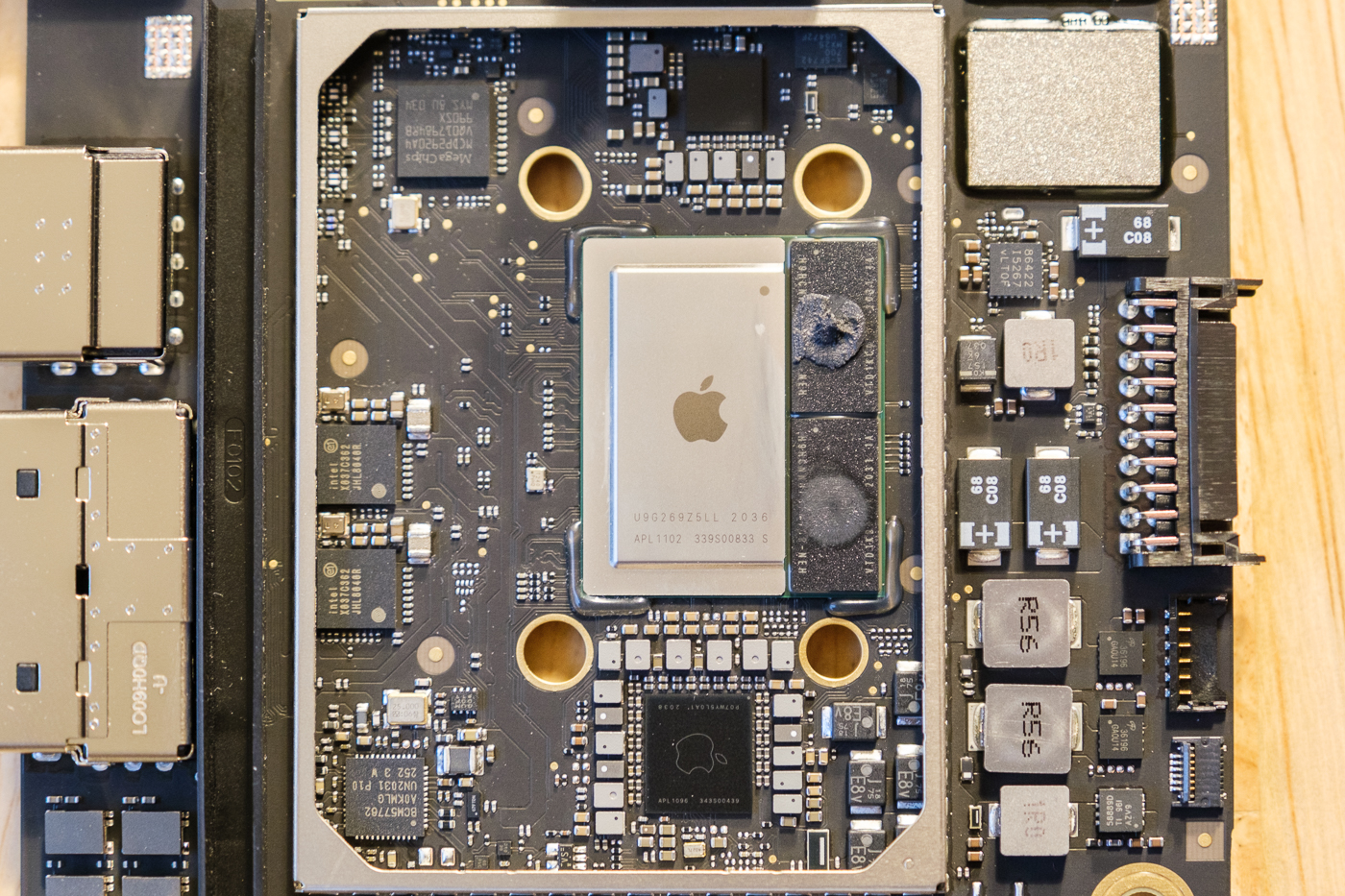
A teardown of the new Mac mini has surfaced on the forum eGPU.io (via Reddit), providing us with a real-world look at Apple's new M1 chip, which is soldered onto a much smaller logic board than the one found in the 2018 model of the computer.

The M1 is the silver chip labeled with APL1102, housing the 8-core CPU, 8-core GPU, 16-core Neural Engine, I/O controllers, and more all in one. The unified system memory is also visible on the right side of the chip, and takes up far less space than the standalone RAM modules used in the previous Mac mini, contributing to the smaller logic board.

As expected, the switch to unified system memory also means that there is no user-upgradeable RAM, as there was with the previous Mac mini, so choose wisely between 8GB or 16GB of memory when configuring the Mac mini on Apple's online store. The SSD also remains soldered to the logic board, so there is no user-upgradeable storage either.
A video teardown of the new Mac mini has also surfaced, revealing that the overall disassembly process is similar to the 2018 model:
There's also a video teardown of the new MacBook Air, providing a peek inside the notebook, although many components are covered with shielding. We'll have to wait on iFixit for its more in-depth teardowns of the new Macs for a closer look.
Article Link: Mac Mini Teardown Provides Real-World Look at M1 Chip on Smaller Logic Board
Last edited:


